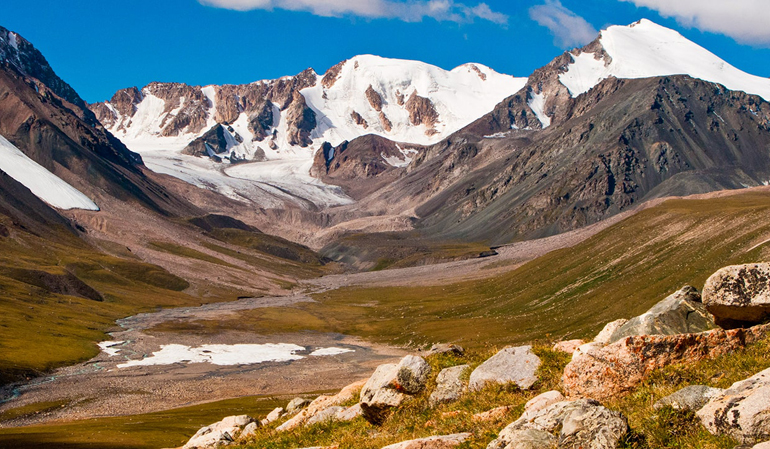Altai 5 Bogd Natural Park

Altai 5 Bogd Natural Park
This stunningly beautiful park stretches south from Tavanbogd Uul and includes the three stunning lakes of Khoton Nuur, Khurgan Nuur and Dayan Nuur. It’s remote area, divided from China by the high wall of snowcapped peaks, and known to local Kazakhs as the Syrgali region. All three lakes are the source of the Khovd Gol, which eventually flows into Khar Us Nuur in Khovd aimag. It’s possible to make rafting trips down river from Dayan Nuur, though no agencies offer this at present. There are many archeological sites in the region. As the main road through the region swings towards the southern shore of Khurgan Nuur you can see a stupa-like construction and several burial sites. Nearby are balbal (Turkic stone statue) and the remains of a processional pathway. Further along the road is a wooden Khazakh mosque, with a ger-shaped roof. Further north-west, along the south-western shore of Khoton Nuur, the road deteriorates and there are several rivers across as they flow into the lake. North-west of Khoton Nuur the mountain close in the there’s some fine trekking possibilities.
Tavan Bogd (Five Saint) mountain rises 4374m above the borders of three nations, and for this reasons it is also known as Nairamdal (Friendship) Peak. If you it on the summit, you can simultaneously be in Mongolia, China and Russia. Tavan Bogd is one of Mongolia’s most spectacular peaks, of interest to professional climbers, and the only one in Bayan Ulgii to be permanently covered with large glaciers (including the 19 km long Potanin Glacier, the longest in Mongolia). It’s fairly dangerous, and to climb it you need to be with an experienced group properly equipped with ice axes, crampons and ropes. Don’t even consider attempting it solo. The best time to climb us July, August and September, after the worst of the summer rains. The massif is made up to five peaks (the five saints)- Khuiten, White stupa, Ulgii, Burged and Nairamdal – the highest of which is Khuiten (meaning ‘cold’) at 4374m.

